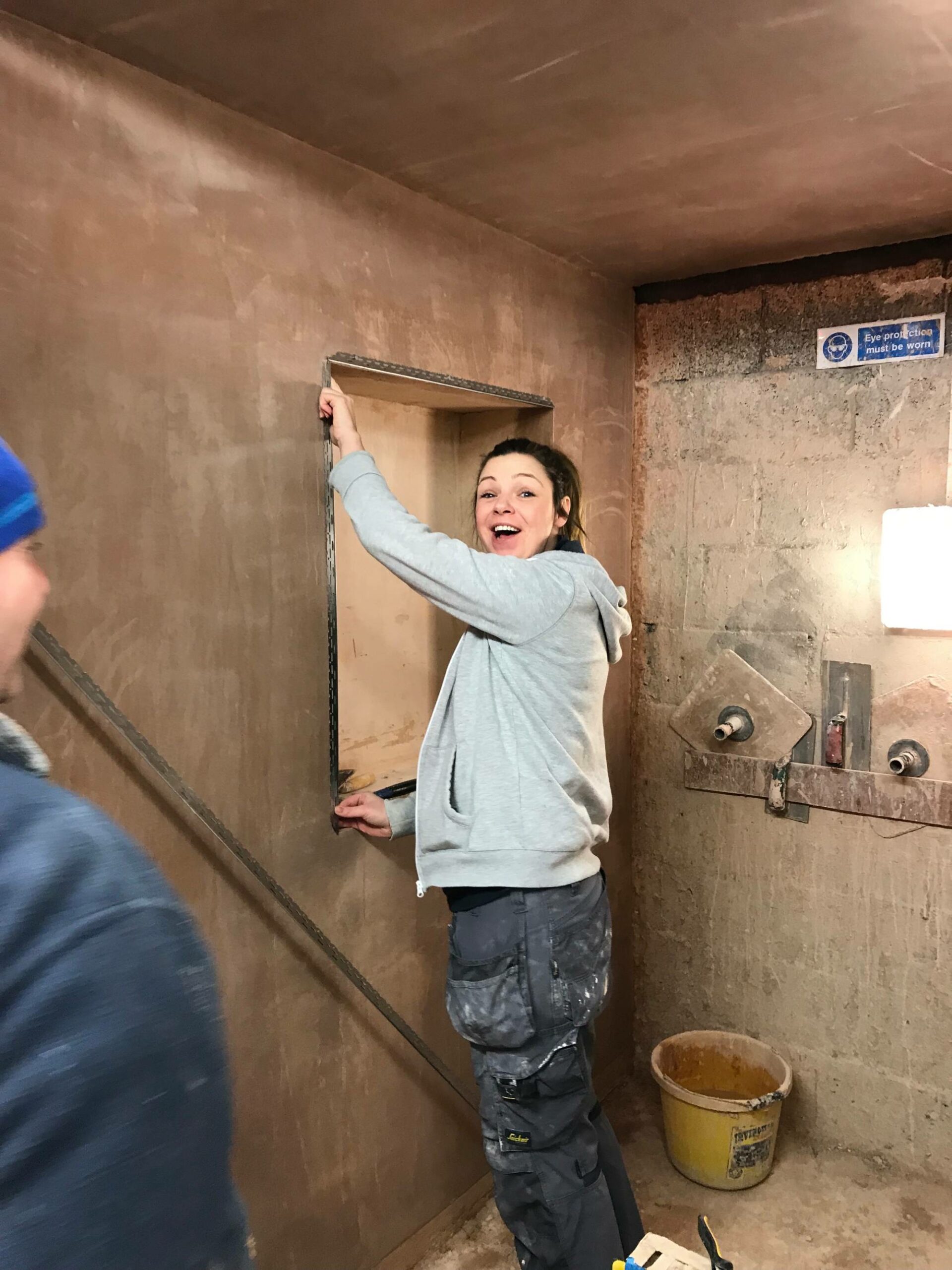Plastering Installment: Expert Providers for New Construction Projects
Plastering Installment: Expert Providers for New Construction Projects
Blog Article
Secret Tips and Tools for Effective Smudging in your house Renovation Ventures
Achieving a flawless plaster finish in your house renovation jobs needs a mix of the right devices and tried and tested techniques. Important implements such as the hawk and trowel are critical for effective application, while proper surface preparation lays the foundation for success. Furthermore, understanding the nuances of mixing plaster and applying it in thin layers can dramatically influence the last result. As we discover these essential aspects, it becomes apparent that staying clear of typical challenges can elevate your plastering abilities-- guaranteeing your following project not only fulfills yet exceeds expectations.
Vital Plastering Tools
A plasterer's toolkit is essential to attaining a sturdy and smooth coating on ceilings and wall surfaces. The important devices include a range of executes developed to promote the gluing procedure efficiently and efficiently. Trick components consist of a hawk, which is a level, square device used to hold the plaster while applying it to surfaces. This tool permits very easy transportation and application of the material.

In addition, a mixing container is needed for preparing plaster, making certain the best consistency prior to application. A smudging brush or sponge serves for completing touches and smoothing out appearances. Lastly, safety tools such as masks and handwear covers need to be consisted of to protect the user from dust and chemicals. Together, these essential plastering devices make it possible for both experts and DIY fanatics to achieve premium outcomes in their smudging projects.
Surface Preparation Methods
Effectively preparing the surface area prior to smudging is vital for guaranteeing bond and accomplishing a remarkable coating. The very first step entails cleaning the surface to get rid of any type of dust, grease, or old paint that may impede the plaster's capacity to bond properly. A thorough laundry with a suitable cleansing option is recommended, adhered to by washing and permitting the surface area to completely dry entirely.
Following, analyze the surface area for any type of cracks or flaws. These ought to be loaded with an appropriate filler compound and allowed to cure according to the supplier's directions. For porous surface areas, applying a guide is vital to produce an uniform structure and enhance bond.
In addition, it is vital to make certain that the surface is stable and structurally sound. Any kind of loosened materials, such as flaking paint or harmed drywall, need to be repaired or eliminated. Consider utilizing a scratch layer to enhance hold. if functioning with stonework surface areas.
Combining Plaster Like a Pro

Using a tidy blending container, put the water initially, after that progressively add the plaster powder while mixing continually - Plastering. This technique assists to avoid clumping and ensures an also circulation of products. A mechanical mixer can be useful, conserving and providing regular outcomes time. Go for a luscious, lump-free consistency that permits easy dispersing but is thick sufficient to hold its shape without running.
Once blended, permit the plaster to relax for a couple of minutes to allow the plaster crystals to moisturize fully. This This Site pause boosts workability and decreases the threat of fracturing during application. By complying with these actions, you can blend plaster like a pro, setting the foundation for an effective smudging job in your house enhancement ventures.
Application Methods for Smooth Finishes
With the plaster mix prepared to the ideal consistency, the next step includes choosing appropriate application techniques to accomplish a smooth coating. This tool allows for a penalty, even circulation of plaster across the surface while decreasing trowel marks.
Begin by applying a generous quantity of plaster to the surface area using the trowel, guaranteeing it sticks well. Use a methodical technique, functioning from the bottom higher. As soon as the initial coat is used, utilize a sweeping movement to smooth the surface, using also pressure. In areas that call for more thorough attention, take into consideration using a float, which can help remove any blemishes and create an uniform structure.
For the final touches, a damp sponge can be utilized to fine-tune the surface additionally. Gently haze the plaster with water and carefully massage the surface area to accomplish a refined effect. Constantly bear in mind to operate in my review here tiny areas to keep control over the application procedure, making certain a smooth, specialist coating throughout your plastering job.
Usual Errors to Avoid
When getting started on a gluing project, preventing typical mistakes is vital for attaining a remarkable finish. Make sure that all dust, grease, and loosened products are removed prior to using plaster.
An additional usual error is applying plaster too thickly. Thick layers can crack as they dry, endangering the integrity of the finish. Rather, choose numerous thin layers, allowing each layer to dry entirely before applying the next.
Additionally, bad mixing techniques can lead to irregular texture and workability. Always adhere to the maker's directions for mixing proportions and thoroughly mix the plaster to achieve an uniform uniformity.

Timing likewise plays a crucial duty; plaster needs to be used while the substrate is damp to boost bond. Top quality trowels and floats can make a substantial difference in accomplishing a smooth finish.
Final Thought
Efficient plastering calls for a comprehensive understanding of essential devices and strategies. Proficiency of these elements not only contributes to the visual charm of a room but also makes sure toughness and long life in plastering jobs, making them essential to successful home enhancement endeavors.
A float is another critical device, which helps original site in leveling the plaster and achieving a consistent surface area.

By complying with these steps, you can mix plaster like a professional, establishing the foundation for an effective gluing job in your home renovation endeavors.
Lightly haze the plaster with water and delicately massage the surface to achieve a sleek result.
Report this page